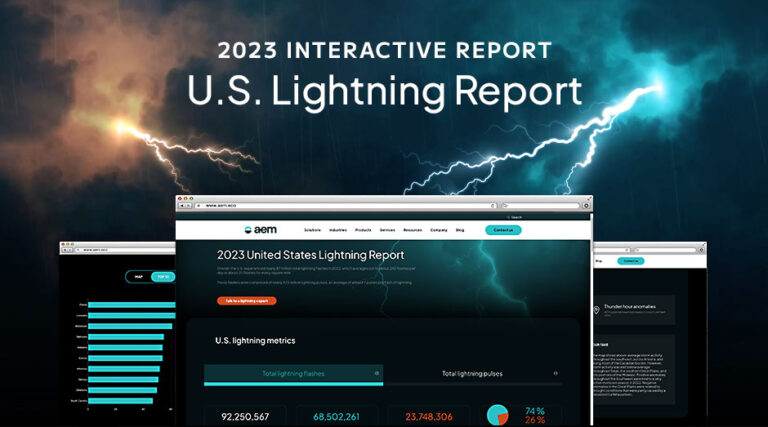AEM has released its 2023 US Lightning Report, which recorded over 558 million lightning pulses within 92 million lightning flashes across the US, a notable 6.6% increase from 2022.
Data for the 2023 report was captured by AEM’s Earth Networks Total Lightning Network (ENTLN), the company’s network for lightning and weather detection. With over 1,800 sensors worldwide, the ENTLN has been designed to help understand and anticipate environmental risks.
Reflecting its continued status as the lightning capital of the nation, Florida once again had the highest density of lightning strikes for any state, a characteristic feature of regions like the Gulf Coast and Southeast, known for their intense lightning activities. The report noted a significant trend among the top 10 states with prevalent lightning, including several from the Great Plains and Missouri making the top 10 due to increased activity across more than two dozen counties, surpassing South Carolina.
Specifically, Florida experienced 108.5 flashes per square mile, contributing to over 5.8 million total lightning flashes. Meanwhile, St. Bernard Parish in Louisiana recorded an astonishing 392 lightning flashes per square mile, the highest in the nation.
In terms of state extremes, Texas had the highest number of lightning strikes overall, recording more than 13 million total flashes. Conversely, New England states like Rhode Island, New Hampshire, and Maine registered some of the lowest lightning flash counts in the country. Hawaii had the lowest overall lightning flashes for a state last year, with fewer than 5,000.
Dr Elizabeth DiGangi, lightning scientist at AEM, commented, “The 2023 report not only quantifies lightning strikes but also brings to light the varied and sometimes extreme weather conditions across different states and counties. These findings highlight the importance of localized weather monitoring and the need for tailored strategies to address the risk.”
The report also explores extremely rare weather events, including the thundersnow phenomenon that occurred in Southern California. Thundersnow combines the electrical activity of a thunderstorm with the cold temperatures of a snowstorm. This event brought not only lightning but also intense snowfall to Southern California.
For more key lightning detection updates from the meteorological technology industry, click here.



